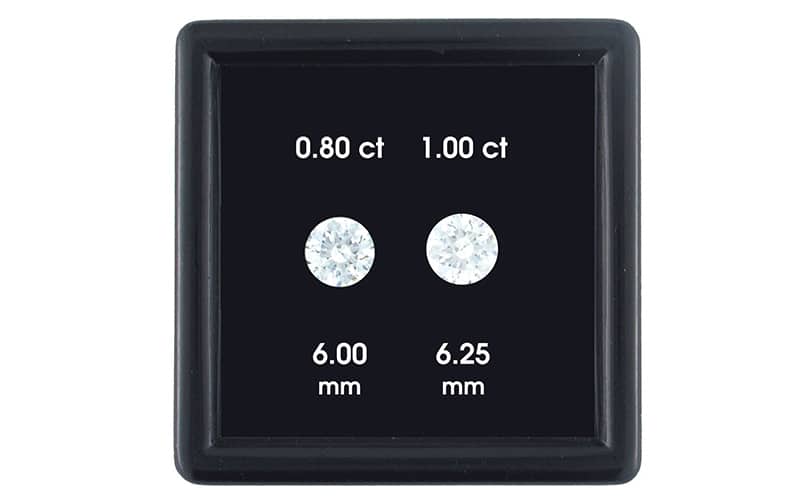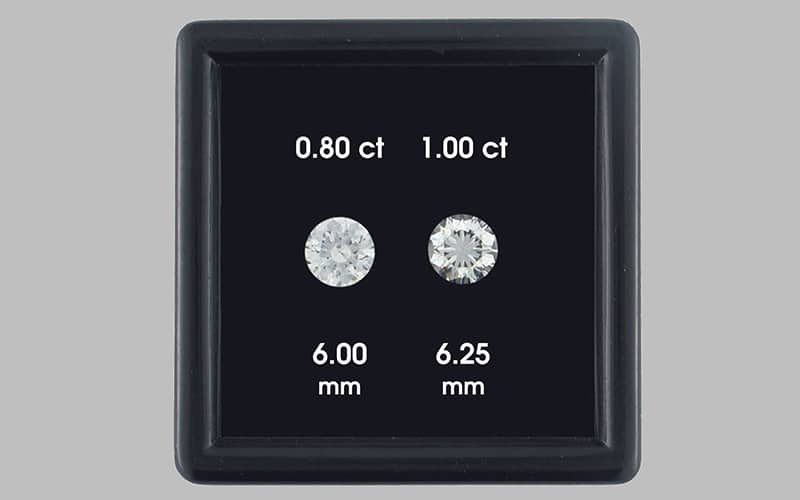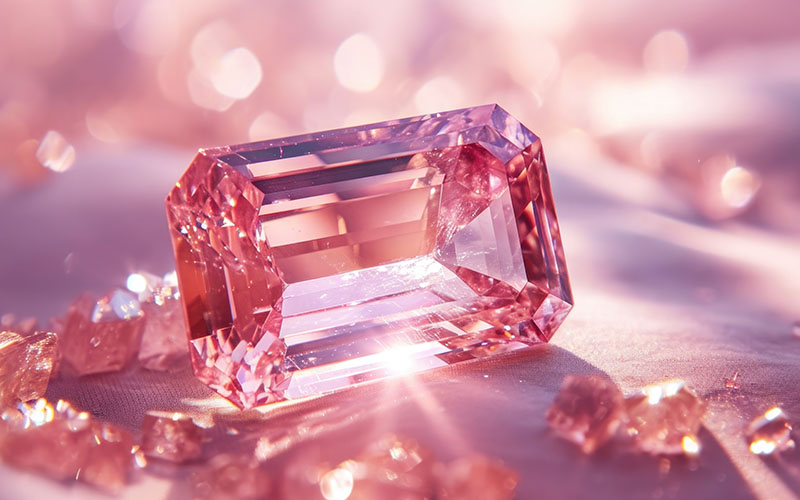Different 1.00 carat diamonds can look different sizes.
This is because we typically view diamonds from a single direction: Above.
Imagine cooking a 1 pound meatball and a 1 pound pancake. On your kitchen scale they weigh the same. When you carry them to the table they weigh the same. But they occupy different surface-areas on the tray, because the meatball’s weight is distributed in a deeper vertical geometry than the pancake, where the weight is distributed horizontally.

Common misconception
Carat Weight is standardized. It’s the only component of the 4Cs which is objectively and uniformly measured across the industry. From one jewelers’ scale to the next and the next, any diamond should weigh the same, to the hundredth of a carat. However, diamonds of the same carat weight can appear to be different sizes when viewed from above.
What to look for:
There are three underlying reasons for diamonds of the same carat weight to take on different size appearance to viewers.
- Shape
- Spread
- Brightness
1. Carat Weight and Shape
Just as people who weigh the same can have different shapes, so can diamonds. Diamonds are cut to a variety of shapes. That means two diamonds of the same carat weight won’t always look the same size when mounted.

Deep shapes like cushions and princess cuts frequently carry more weight in the body than round brilliants, so they will look physically smaller from the top.

Shallow shapes like emerald cuts, marquise and ovals can bring aesthetic benefit in terms of spread, but may not have the same dispersion or sparkle potential as deeper shapes.
2. Carat Weight and Spread
A diamond’s spread is its average width (or length and width for fancy shapes). These measurements are important to take into account when comparing diamonds because, when looking down on the diamond from above, the spread is a more meaningful indication of its physical size-appearance to viewers than carat weight.
Using the round brilliant:
- The left example is like the pancake above. It has a shallow geometry for a round brilliant. On a grading report it weighs 1.00 carat with given measurements of 6.64-6.66 x 3.80 millimeters. The average of the first two numbers (length and width) are its spread, which becomes 6.65 mm.
- The center example is proportionate. On a grading report it weighs 1.00 carat with given measurements of 6.44-6.46 x 3.80 millimeters, making its spread (average of length and width) 6.45 mm.
- The right example is like the meatball above. It has deep angles which distribute weight more vertically. On a grading report it weights 1.00 carat with given measurements of 6.24-6.26 x 4.06 millimeters, making its spread 6.25 mm.

Spread & Brightness Work Together
While the shallow diamond will appear physically larger from above in jewelry store spotlights it’s not necessarily the best choice for those seeking the diamond which will appear the brightest and largest through multiple illumination environments.
3. Carat Weight and Brightness
The way a diamond is cut dictates whether light entering the crown will reflect back to the viewer’s eyes from the pavilion (bottom) facets, or pass through those facets – windowing or ‘leaking’ – through the bottom.
If the diamond is proportionate for its weight, cut with angles which promote brightness, it will continue to look large in many illumination scenarios. If it’s cut too shallow or too deep it may window light, going dark at the edges and looking smaller away from spotlights.

Bright lights, like those used in jewelry stores, show diamonds at their best when it comes to carat-weight appearance. A one-carat diamond will never look larger than it does seen under spotlights. The real test comes when the diamond is removed from bright lighting and passes through illumination scenarios with average or low lighting.
Bright Lighting
For example, these stones are both bright under spotlights.

Normal Lighting
But in normal lighting the 80-pointer remains bright from edge to edge, while the 1 carat stone doesn’t. In fact, the 80-pointer now appears visually larger than the 1-carat stone, even though it’s physically smaller. The difference is cut-quality.

Shape. Spread. Brightness.
More than any other “C” the way a diamond is cut determines how physically large, visually bright and lively it will appear as it travels through different lighting conditions.
Jewelry professionals are trained to evaluate a diamond’s depth and spread – along with its carat weight – especially when matching two or more diamonds together for a piece of jewelry.
The most reputable and knowledgeable jewelers will also select diamonds with proportionate cut quality which promotes robust light behavior – ensuring the precious pieces they provide will remain at their best and brightest through the world’s infinite panorama of illumination scenarios.




